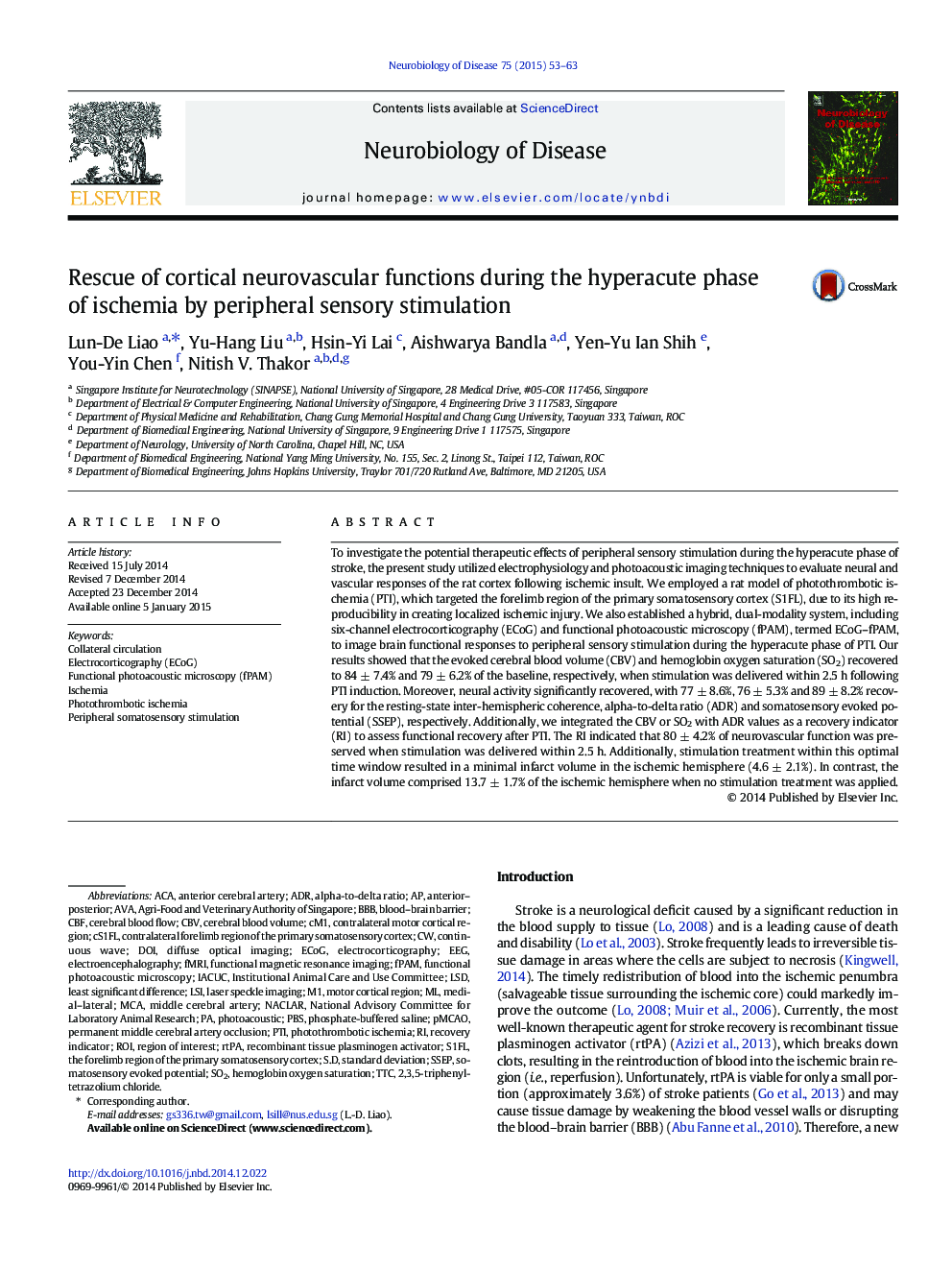| Article ID | Journal | Published Year | Pages | File Type |
|---|---|---|---|---|
| 6021844 | Neurobiology of Disease | 2015 | 11 Pages |
Abstract
To investigate the potential therapeutic effects of peripheral sensory stimulation during the hyperacute phase of stroke, the present study utilized electrophysiology and photoacoustic imaging techniques to evaluate neural and vascular responses of the rat cortex following ischemic insult. We employed a rat model of photothrombotic ischemia (PTI), which targeted the forelimb region of the primary somatosensory cortex (S1FL), due to its high reproducibility in creating localized ischemic injury. We also established a hybrid, dual-modality system, including six-channel electrocorticography (ECoG) and functional photoacoustic microscopy (fPAM), termed ECoG-fPAM, to image brain functional responses to peripheral sensory stimulation during the hyperacute phase of PTI. Our results showed that the evoked cerebral blood volume (CBV) and hemoglobin oxygen saturation (SO2) recovered to 84 ± 7.4% and 79 ± 6.2% of the baseline, respectively, when stimulation was delivered within 2.5 h following PTI induction. Moreover, neural activity significantly recovered, with 77 ± 8.6%, 76 ± 5.3% and 89 ± 8.2% recovery for the resting-state inter-hemispheric coherence, alpha-to-delta ratio (ADR) and somatosensory evoked potential (SSEP), respectively. Additionally, we integrated the CBV or SO2 with ADR values as a recovery indicator (RI) to assess functional recovery after PTI. The RI indicated that 80 ± 4.2% of neurovascular function was preserved when stimulation was delivered within 2.5 h. Additionally, stimulation treatment within this optimal time window resulted in a minimal infarct volume in the ischemic hemisphere (4.6 ± 2.1%). In contrast, the infarct volume comprised 13.7 ± 1.7% of the ischemic hemisphere when no stimulation treatment was applied.
Keywords
IACUCS.DS1FLPTICM1AVASSEPrtPAADRCBVpMCAO2,3,5-triphenyl-tetrazolium chlorideECoGCBFTTCDOILSIPBSMCALSDROIACASomatosensory evoked potentialHemoglobin oxygen saturationElectroencephalographyelectrocorticographyElectrocorticography (ECoG)standard deviationPermanent middle cerebral artery occlusionIschemiaLaser speckle imagingDiffuse optical imagingfMRIfunctional magnetic resonance imagingcerebral blood flowCerebral blood volumeleast significant differenceSO2Institutional Animal Care and Use CommitteeBBBBlood–brain barrieranterior cerebral arterymiddle cerebral arteryPhotoacousticRecombinant tissue plasminogen activatoranterior–posteriorPhosphate-buffered salineregion of interestcontinuous wavemedial–lateralEEGCollateral circulation
Related Topics
Life Sciences
Neuroscience
Neurology
Authors
Lun-De Liao, Yu-Hang Liu, Hsin-Yi Lai, Aishwarya Bandla, Yen-Yu Ian Shih, You-Yin Chen, Nitish V. Thakor,
